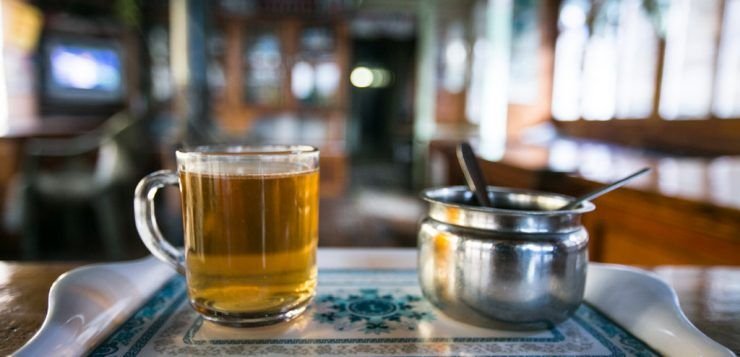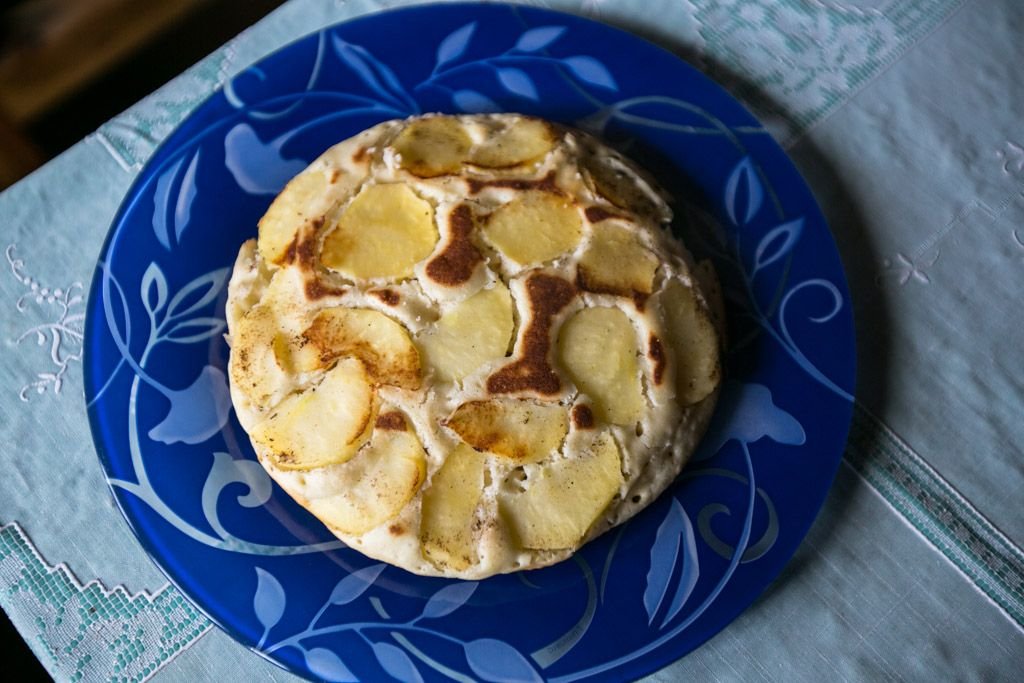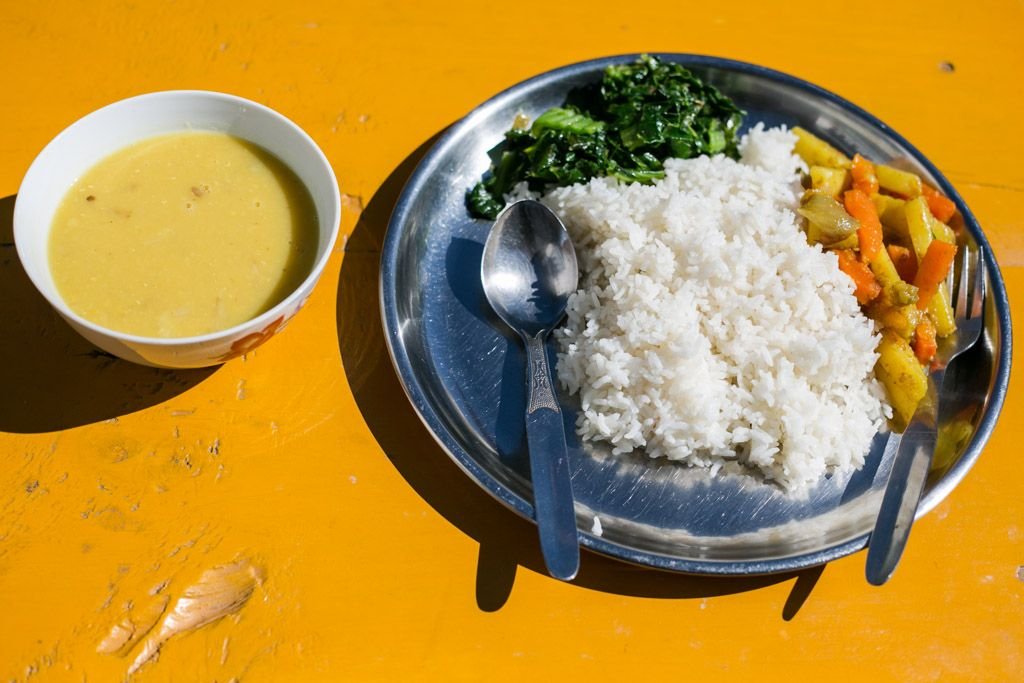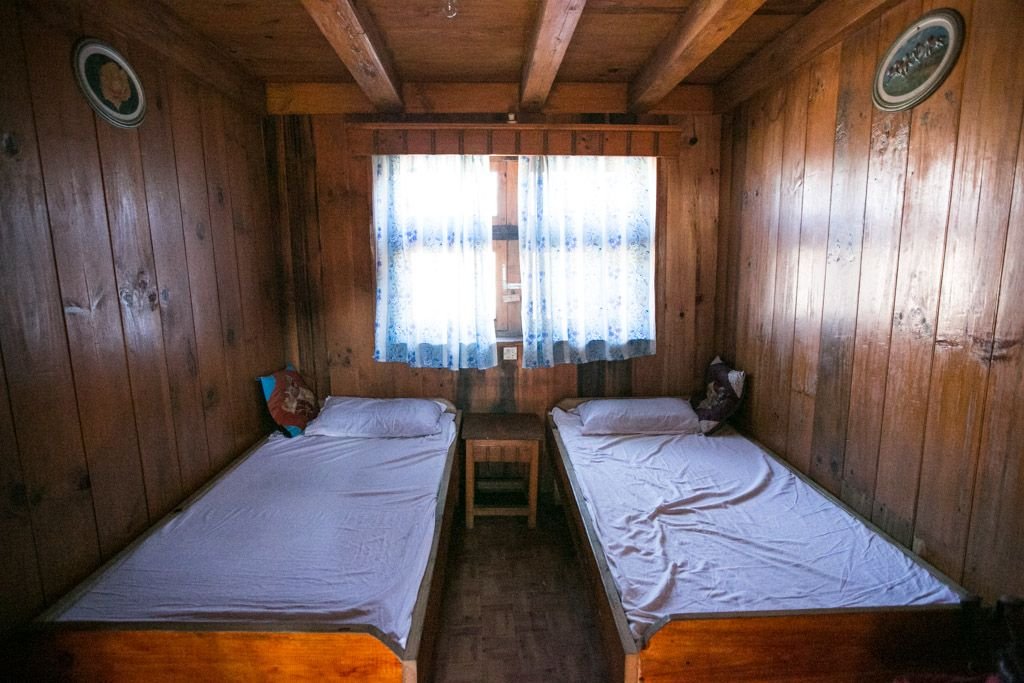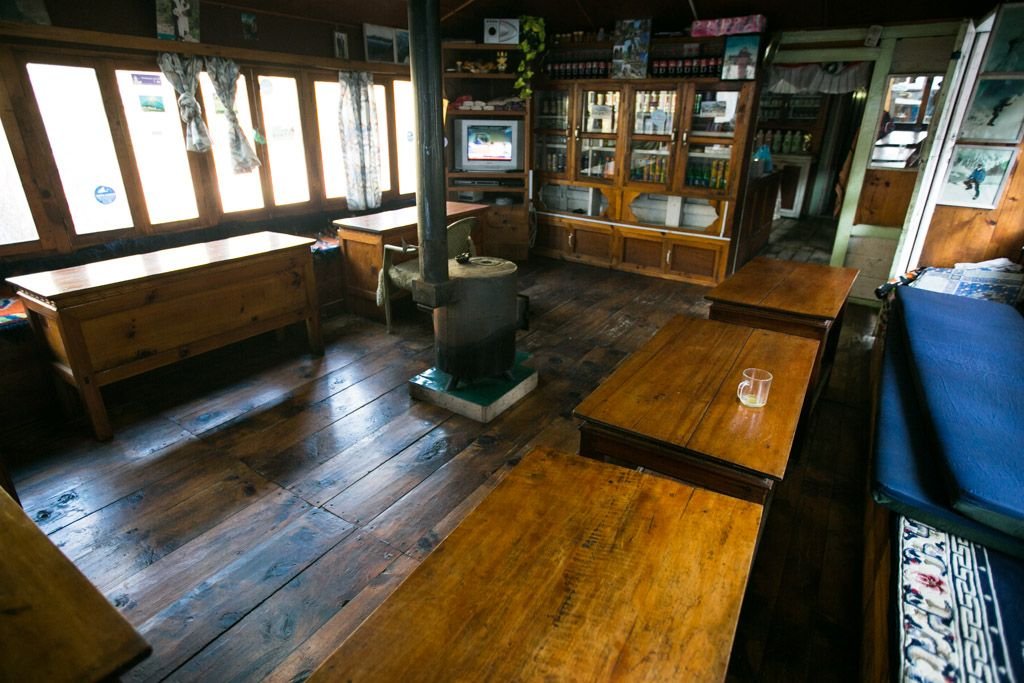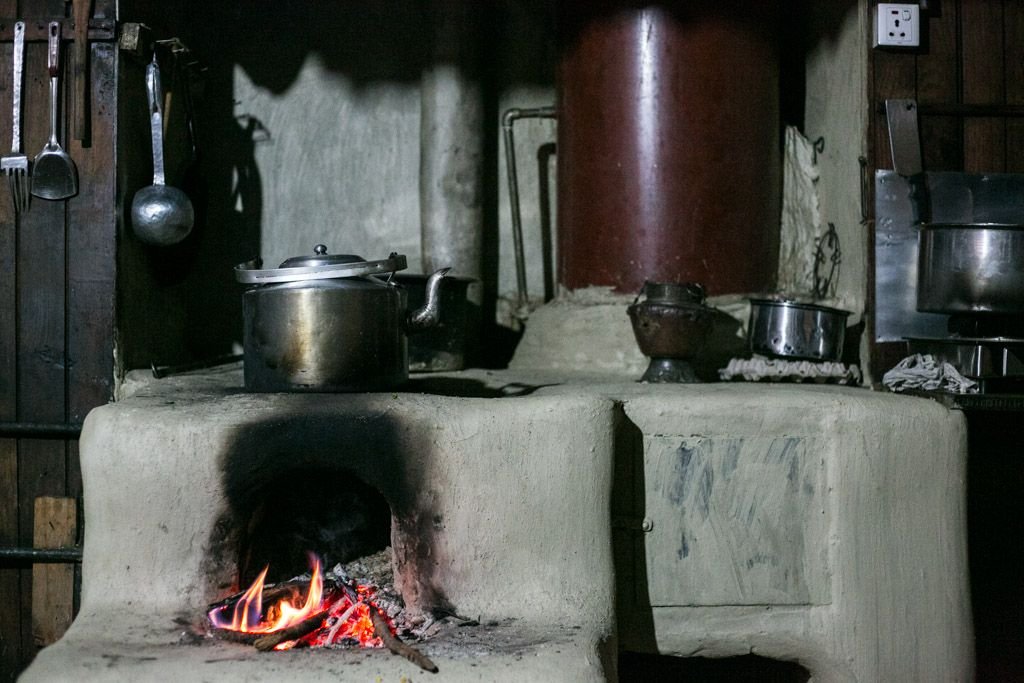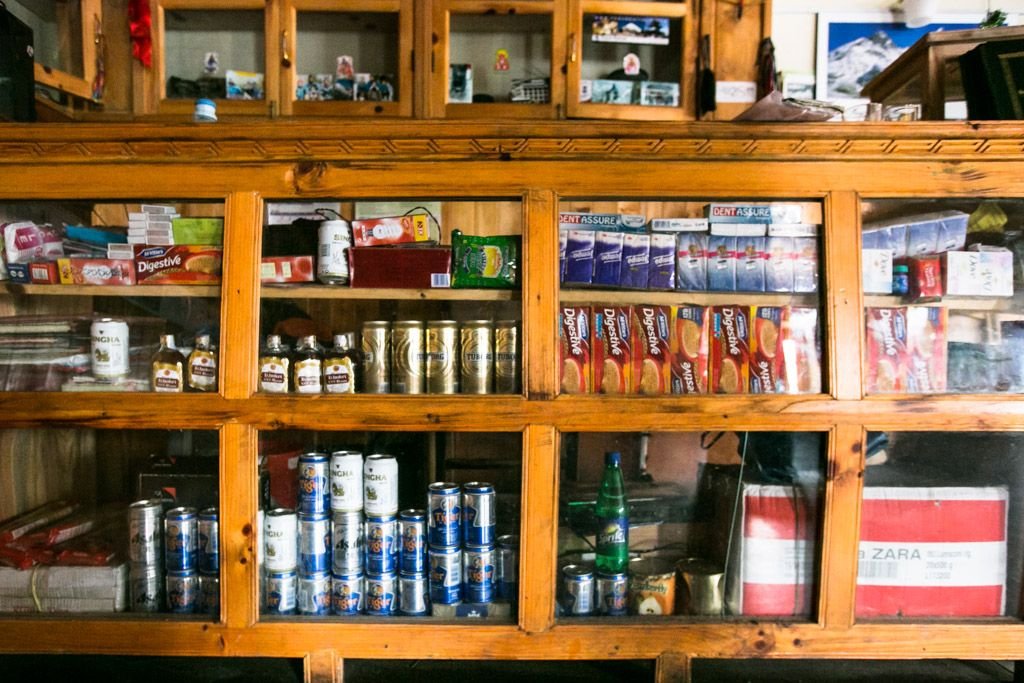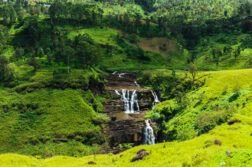This post was last updated on 2018 October 27
First thing’s first: no one camps while trekking in Nepal. That’s because all of the trails are populated with affordable guesthouses – aka tea houses – so there’s really no need to.
When I set off on the Everest Base Camp trek, I’d assumed that Nepalese tea houses were simply lodges set along the way where you’d grab a meal and crash for the night. But they are much more than that – tea houses are an institution in the world of Nepal trekking. Each one has its own character (and cast of characters!).
Here’s the nitty gritty on what it’s like at the Nepal tea houses:
Tea at Tea Houses in Nepal
True to name, Nepal tea houses serve tea with breakfast, lunch, and dinner. They serve it AFTER breakfast, lunch, and dinner. Basically, Nepali people drink tea around the clock. Milk tea is the drink of choice, but they also offer black, mint, ginger, and lemon tea. Coffee is available as well, albeit instant coffee. Cups are 30-50 RS below Lukla, and 50-80 RS above Lukla.
Many trekkers will also stop at tea houses along the way to take a break from trekking, rehydrate and warm up with a cup of tea and perhaps a snack, and then carry on their way.
Food At Tea Houses in Nepal
Food is fairly basic (and repetitive) at Nepal tea houses.
For breakfast, you’ll find some variation of the following:
- Pancakes: Plain, apple, cinnamon, lemon; served with peanut butter or honey
- Porridge: Oat, champa (barley)
- Eggs: Scrambled, boiled, fried, poached, omelet (plain, onion, vegetable, cheese)
- Bread: Toast, Tibetan, Chapati
For lunch/dinner, the meal of choice is daal baht: a huge plate of white rice with small sides of a vegetable or two (often spinach and potato), and a bowl of lentil soup. Each daal baht is different – some curried, some spicy, some plain, some thicker – it depends on how the chef likes to prepare it. So although it’s the same general dish, you shouldn’t get too sick of having it daily since the flavor will vary. The best thing about daal baht is that it’s All You Can Eat – they’ll replenish your plate before you have a chance to finish the first serving. It’s perfect after a long day of trekking when you’re famished.
If you’re craving something other than daal baht, there are plenty of other options for food at tea houses. Usually they look something like this:
- Rice: Daal baht, fried rice (chicken, vegetable, plain), curried, plain
- Soup: Sherpa stew, chicken, tomato, garlic, mushroom, vegetable
- Noodles: Chowmein, egg fried, spaghetti
- Potato: Boiled, fried, mashed, chips, Swiss rosti, pancakes
- Other: Pizza, spring rolls, dumplings
Note that meat is hard to come by while trekking in Nepal. On the EBC Trek, there is no meat beyond Namche Bazaar. Below Lukla, there is no meat during the ‘off season’ (which is the majority of the year).
Accommodation At Tea Houses in Nepal
Given that you’re trekking through the wilderness in a third world country, accommodation at Nepal tea houses is very basic. There is usually no electricity til after dark and no heat outside of winter.
Rooms:
Most rooms have two twin beds, occasionally a double bed. Some tea houses have dorms as well. Beds are prepped with sheets and a pillow – be sure to ask for a blanket (or 3) too, as it is freezing at night! The room may have a shelf, coat hooks, a chair, or a small table, but often they don’t. You are usually provided with a padlock to secure your door, but it’s a good idea to bring your own, just in case.
Common Area:
Tea houses in Nepal have an open room with tables arranged around the perimeter for trekkers to sit, hang out, and dine. In the center of the room there is usually a wood stove, only used in winter months. It’s common for there to be a display of snacks and other essential items on one side of the room to entice trekkers to buy. If you’re lucky, there will be a TV.
Kitchen:
A tea house kitchen will either be connected to the common area, or a completely separate entity. Depending on the tea house owners, visitors may be allowed to hang out in the kitchen and warm up by the fire.
The kitchen is stacked with all sorts of utensils, always immaculately arranged and in plain sight: e.g. bowls/plates/cups stacked on shelves, spoons/ladles of varying sizes hanging on the wall, pots/pans arranged by size on top of a cabinet.
Toilet:
Flush toilets are a rarity in Nepal – if they exist at all, you’ll likely have to add water to the bowl before flushing and discard of toilet paper in a waste bin.
Most of the time, you’ll be squatting over a porcelain hole and rinsing it down with water afterward. Toilets are frequently located in a separate building, which is not so fun when you have to go outside in the middle of the night to use them.
Occasionally you may encounter a tea house toilet with burlap sacks as a door, and a platform inside that you squat through. This is about as primitive as it gets without going in the bush! No rinse needed, but definitely don’t look down at the ground below!
Other Amenities At Tea Houses in Nepal
- Cold showers are free; hot showers (if available) will cost 100-300 RS. Above Namche Bazaar, you’ll be using a bucket of water if you want to shower.
- Battery charging is about 150-300 RS, though some Nepal tea houses charge by the hour. You might be able to get away with free battery charging if you ask your guide to charge it for you, OR if your room happens to have a plug.
- Essential items are sometimes for sale, e.g. toilet paper, sunscreen, lotion, toothpaste, beer, bottled water.
SEE ALSO: Everest Base Camp Trek: Phaplu to Lukla // Taking the Everest Base Camp Trek By Storm // Best of Nepal Photo Gallery

